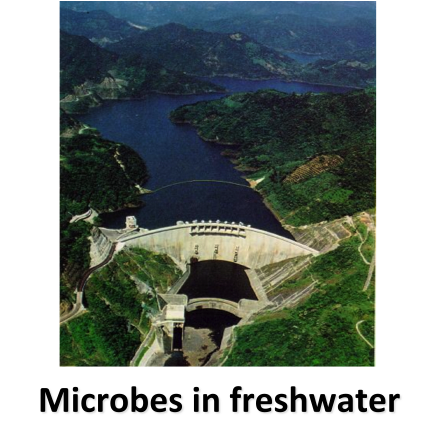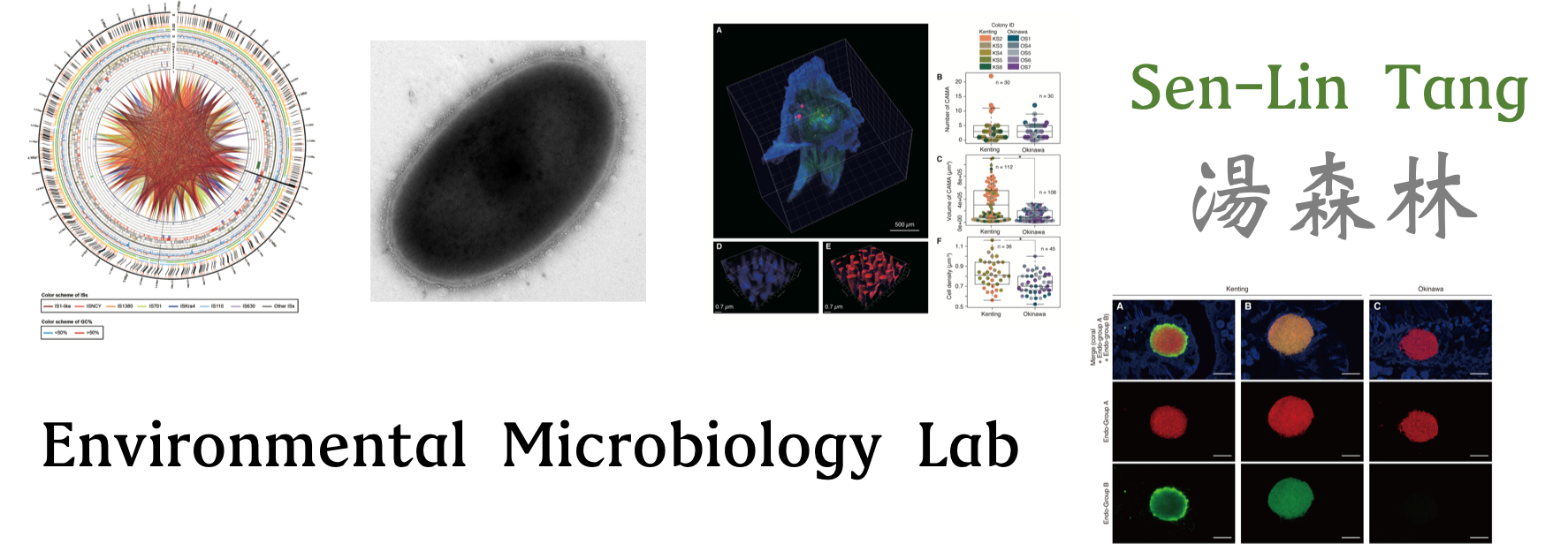Freshwater microbial and viral metagenomics
 To assess the impact of typhoons (tropical storms) on microbial community, we conducted a metagenomics approach to understand the change in microbial community composition and genomes. In addition, we also want to examine whether our result would support a hypothesis that cyanobacterial bloom after typhoon is relevant to phosphate releasing. Phosphate is limited in Fei-Tsui water reservoir and typhoons are a kind of climate activity that can increase inorganic phosphate concentration in the water. As phosphate is important for growth of microbes. It would be also interesting to inspect how heterotrophic bacteria would compete for uptaking phosphate from cyanobacteria. The metagenomes and viromes have provided insights into the change in microbial community of the water reservoir. The part of the experimental result has been published on ISME J, 2013. The details can be found in the paper. The abstract of the paper is described in the following:
To assess the impact of typhoons (tropical storms) on microbial community, we conducted a metagenomics approach to understand the change in microbial community composition and genomes. In addition, we also want to examine whether our result would support a hypothesis that cyanobacterial bloom after typhoon is relevant to phosphate releasing. Phosphate is limited in Fei-Tsui water reservoir and typhoons are a kind of climate activity that can increase inorganic phosphate concentration in the water. As phosphate is important for growth of microbes. It would be also interesting to inspect how heterotrophic bacteria would compete for uptaking phosphate from cyanobacteria. The metagenomes and viromes have provided insights into the change in microbial community of the water reservoir. The part of the experimental result has been published on ISME J, 2013. The details can be found in the paper. The abstract of the paper is described in the following:  Extreme climatic activities, such as typhoons, are widely known to disrupt our natural environment. In particular, studies have revealed that typhoon-induced perturbations can result in several long-term effects on various ecosystems. In this study, we have conducted a 2-year metagenomic survey to investigate the microbial and viral community dynamics associated with environmental changes and seasonal variations in an enclosed freshwater reservoir subject to episodic typhoons. We found that the microbial community structure and the associated metagenomes continuously changed, where microbial richness increased after typhoon events and decreased during winter. Among the environmental factors that influenced changes in the microbial community, precipitation was considered to be the most significant. Similarly, the viral community regularly showed higher relative abundances and diversity during summer in comparison to winter, with major variations happening in several viral families including Siphoviridae, Myoviridae, Podoviridae and Microviridae. Interestingly, we also found that the precipitation level was associated with the terrestrial viral abundance in the reservoir. In contrast to the dynamic microbial community (L-divergence 0.73±0.25), we found that microbial metabolic profiles were relatively less divergent (L-divergence 0.24±0.04) at the finest metabolic resolution. This study provides for the first time a glimpse at the microbial and viral community dynamics of a subtropical freshwater ecosystem, adding a comprehensive set of new knowledge to aquatic environments.The ISME Journal advance online publication, 11 July 2013; doi:10.1038/ismej.2013.118.
Extreme climatic activities, such as typhoons, are widely known to disrupt our natural environment. In particular, studies have revealed that typhoon-induced perturbations can result in several long-term effects on various ecosystems. In this study, we have conducted a 2-year metagenomic survey to investigate the microbial and viral community dynamics associated with environmental changes and seasonal variations in an enclosed freshwater reservoir subject to episodic typhoons. We found that the microbial community structure and the associated metagenomes continuously changed, where microbial richness increased after typhoon events and decreased during winter. Among the environmental factors that influenced changes in the microbial community, precipitation was considered to be the most significant. Similarly, the viral community regularly showed higher relative abundances and diversity during summer in comparison to winter, with major variations happening in several viral families including Siphoviridae, Myoviridae, Podoviridae and Microviridae. Interestingly, we also found that the precipitation level was associated with the terrestrial viral abundance in the reservoir. In contrast to the dynamic microbial community (L-divergence 0.73±0.25), we found that microbial metabolic profiles were relatively less divergent (L-divergence 0.24±0.04) at the finest metabolic resolution. This study provides for the first time a glimpse at the microbial and viral community dynamics of a subtropical freshwater ecosystem, adding a comprehensive set of new knowledge to aquatic environments.The ISME Journal advance online publication, 11 July 2013; doi:10.1038/ismej.2013.118.
